
(Continued) … According to the foreword to Diane Arbus: Documents by Lucas Zwirner and Jeffrey Fraenkel, those involved with this enterprise first assembled these copious materials in a handmade spiral-bound “reference book,” produced in an edition of 12, its copies available for browsing at the venues hosting the 2011 European tour of an Arbus retrospective. That inspired them to create a publishable version of the whole batch, which represented not just an editorial challenge but a licensing one.
For this version the editors have organized the texts chronologically within chonologically sequenced sections devoted to pivotal moments in the public life of Arbus’s work: the 1967 “New Documents” show at the Museum of Modern Art, the 1972 MoMA retrospective, the notorious Sontag article and responses thereto, etc. Interspersed with these the reader finds scrapbook-style collages, correspondence with French curator Jean-Claude Lemagny of the Bibliothèque nationale de France in Paris, and other period ephemera from the Arbus archives. The back matter includes a 600-item bibliography of English-language articles on Arbus (including those in the book), an exhibition history, and an index — sufficient scholarly apparatus to make this work useful for research purposes.
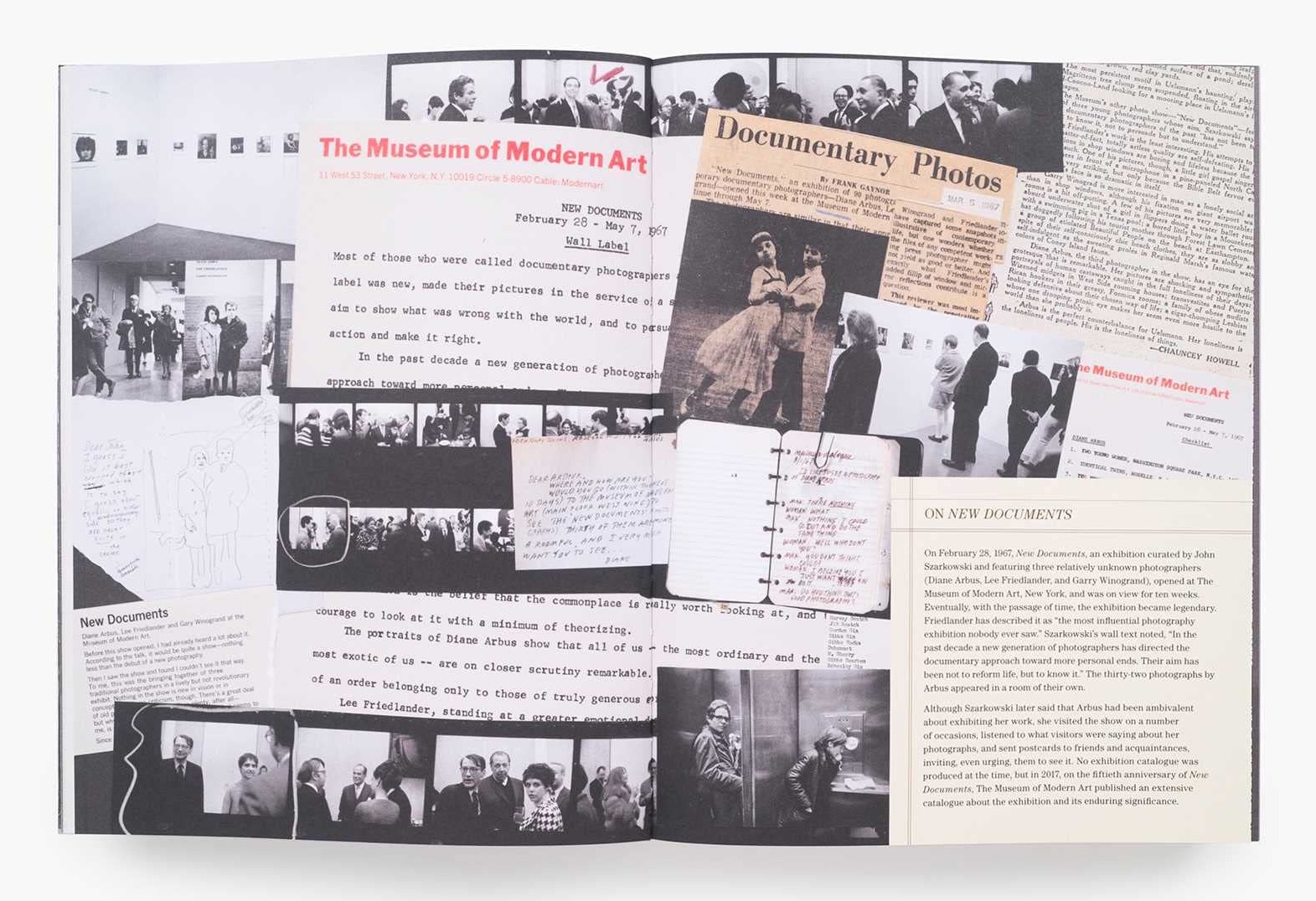
Diane Arbus: Documents (2022), spread 5
•
Actually reproducing published articles can — and, in most of these cases, including mine, did — require not just obtaining permission for republication of the texts themselves but permission to replicate the published versions as they appeared on the page.
Subsidiary rights to texts may reside with the authors or their heirs or estates, or else with the publications; reproduction rights to their appearance on the page reside with the original publishers. Perhaps the energy required for these procedural chores explains the absences of any introductory overview of the discourse on Arbus that it represents cumulatively, any editor’s notes on the individual texts themselves, and any explanation of the selection process used to create this grouping. Instead, the project managers simply hand a large stack of Arbus-related articles to the reader.
So the sheer quantity of material contained here is at once impressive and overwhelming. Picking it up in a museum bookstore, I’d have to ask myself whether I would ever actually read (or, in some cases, re-read) almost 70 essays on Arbus. For that matter, would I read that many essays about photographers who interest me more — Robert Frank, say, or W. Eugene Smith? Would I read half that many — three dozen? Two dozen? Ten? Would I read them sequentially, chronologically working my way through the set, or would I browse? Would I read any essay all the way through, or would I merely sample a paragraph here and there?
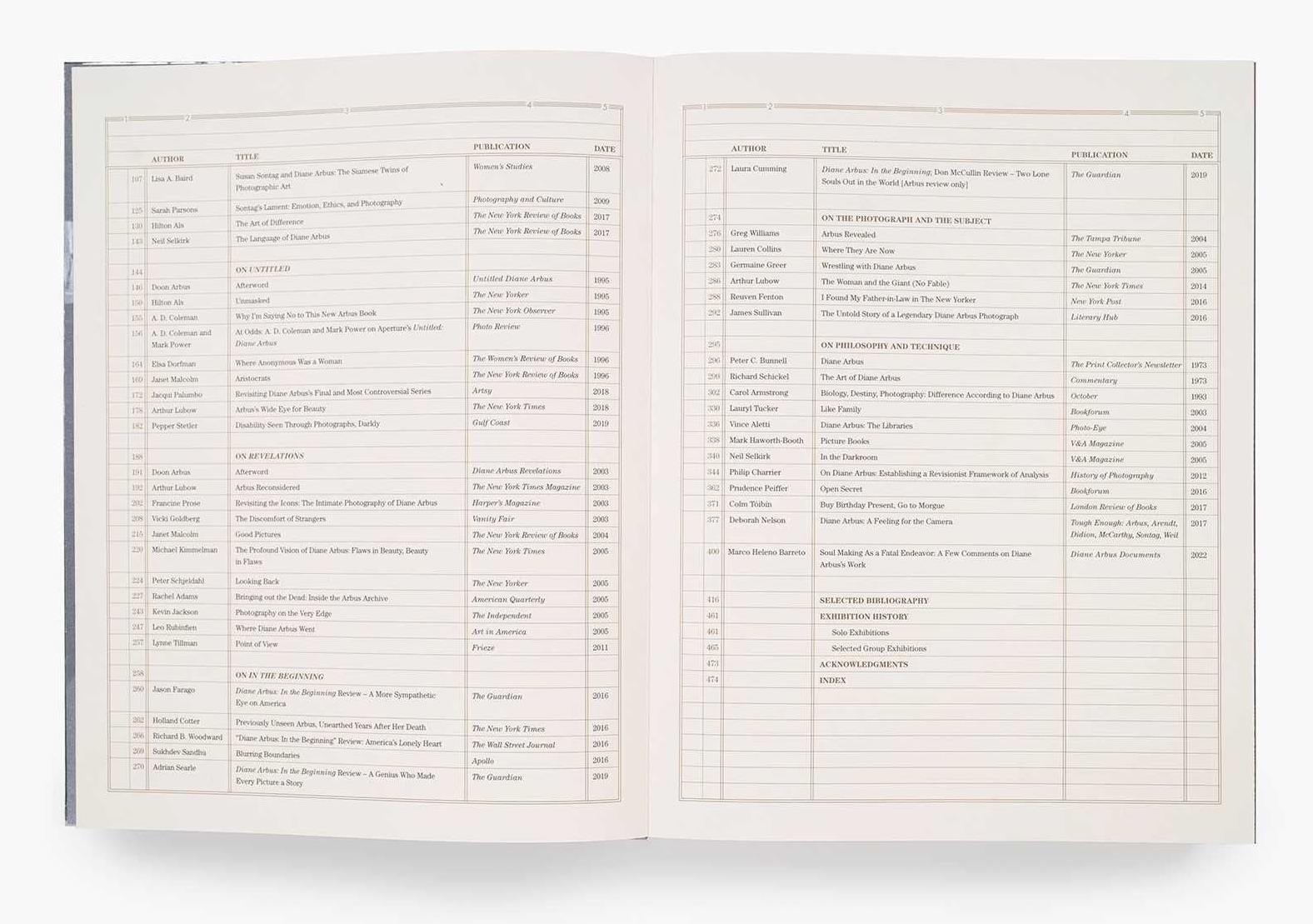
Diane Arbus: Documents (2022), table of contents
Mind you, I’m in the field, thus more inclined than many to delve into its literature. And I’m included in the book, which arguably gives me motive to see how my own thoughts connect with those of my colleagues. So if I don’t expect to sit down and spend days dutifully making my way through this material, I’d find it surprising if many other people felt that impulse.
The original casebook model has the advantage (from the reader’s standpoint) of both promising and delivering a manageable encounter with a carefully edited and annotated slice of the critical discourse, with the most notable threads of response represented by key texts, the whole so organized that one or two days’ reading would suffice. Hardly imposing, certainly not daunting; to the contrary, portable — compact enough to fit into 400 pages of what was then called a “quality paperback,” 6×9″ inches in size and weighing roughly one pound.
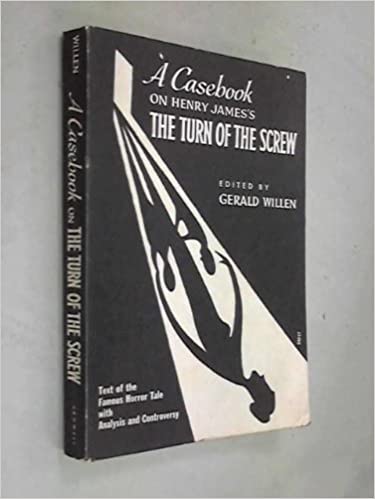
Gerald Willen, ed., A Casebook on Henry James’s The Turn of the Screw (1963), cover
Which brings us to the cost. I haven’t turned up any indication of the list price of the Henry James casebook discussed earlier as an example of that form. But given its publication date (1960), its minimal editorial and licensing costs, its elementary production values, and its probable target as the post-secondary English Lit and library markets, I’d guess its publisher, Thomas Y. Crowell, priced it at somewhere between $2.99 and $3.99. (Perhaps not insignificantly, you can get copies in good condition at Amazon in that price range today.)
This made it, in a word, affordable, enough so that a college professor could assign it (as mine did) as one of several required texts for a course. It has no reproductions; its one extravagance, for the first edition whose cover appears here, would have been the cover illustration by Edward Gorey. (Not to mention that it went through at least two editions and ten printings, surely not just recouping the publisher’s investment in it but making a handsome profit thereon.)
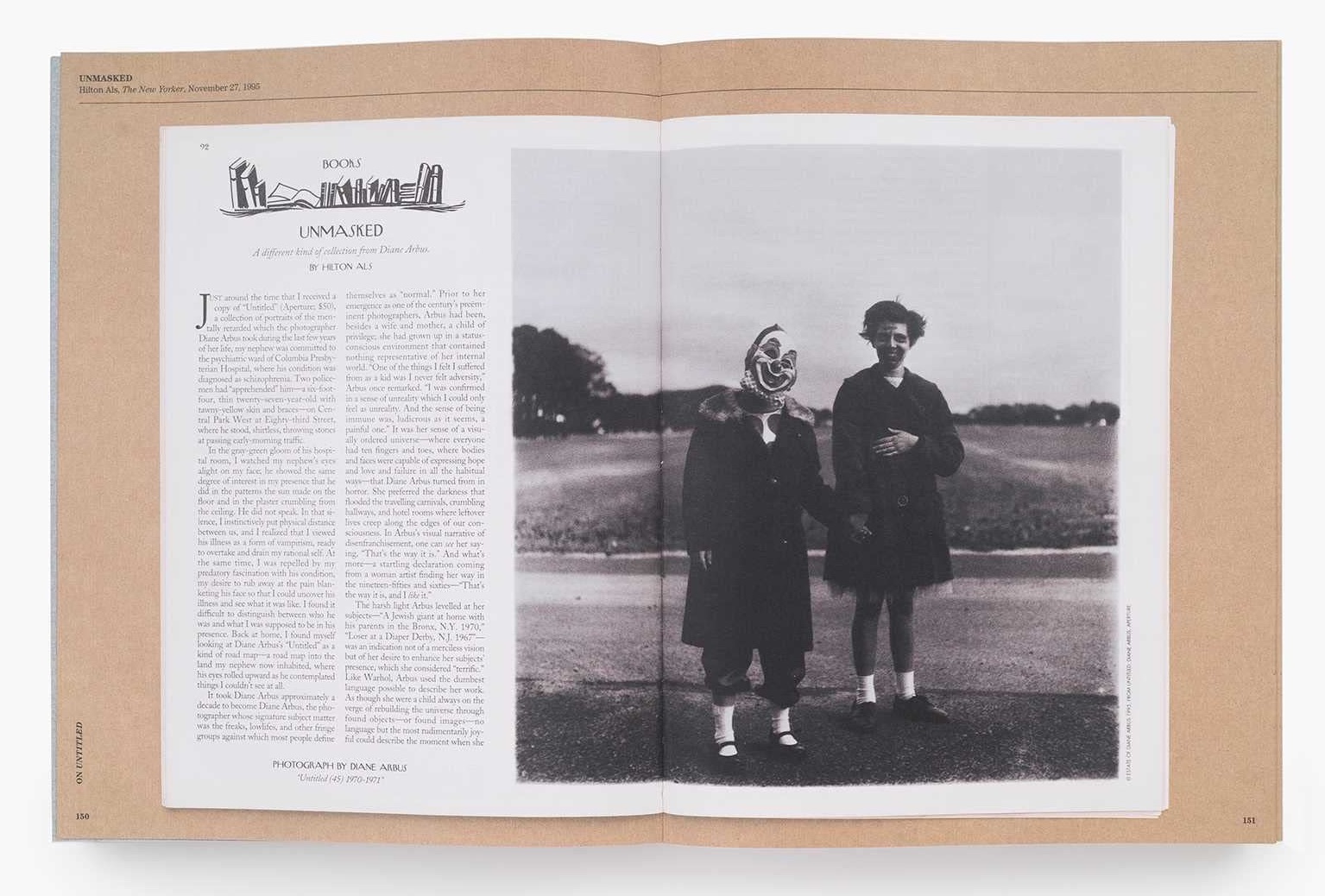
Diane Arbus: Documents (2022), spread 4
•
In effect, the team behind this Arbus tome radically reconceived the inexpensive, functional scholarly casebook as a pricey, lavishly illustrated mass-market coffee-table book. The result will certainly put all this material in the hands of people who most likely would never have purchased something called a casebook and/or simply contained these texts in this sequence, typeset anew homogeneously for that functional purpose.
But I must ask the difficult yet obvious question: Is that automatically a good thing? To put it another way, does this repackaging of texts do anything more than add to this textual collation some equivalent of the aerosol-can spray smell of fresh-baked bread that real-estate agents use to evoke the sense of home in a house for sale?
Speaking as a writer, and as a contributor to this particular book, I have to say that I welcome any project introducing any of my work to potential new readers. I’m particularly pleased by the inclusion of my 1995 response to the posthumous Untitled project, which almost thirty years later has yet to provoke any cogent response to the core issues it raises. So I happily agreed to this use of my texts when asked, and I’m pleased to see them in such good and diverse company here.
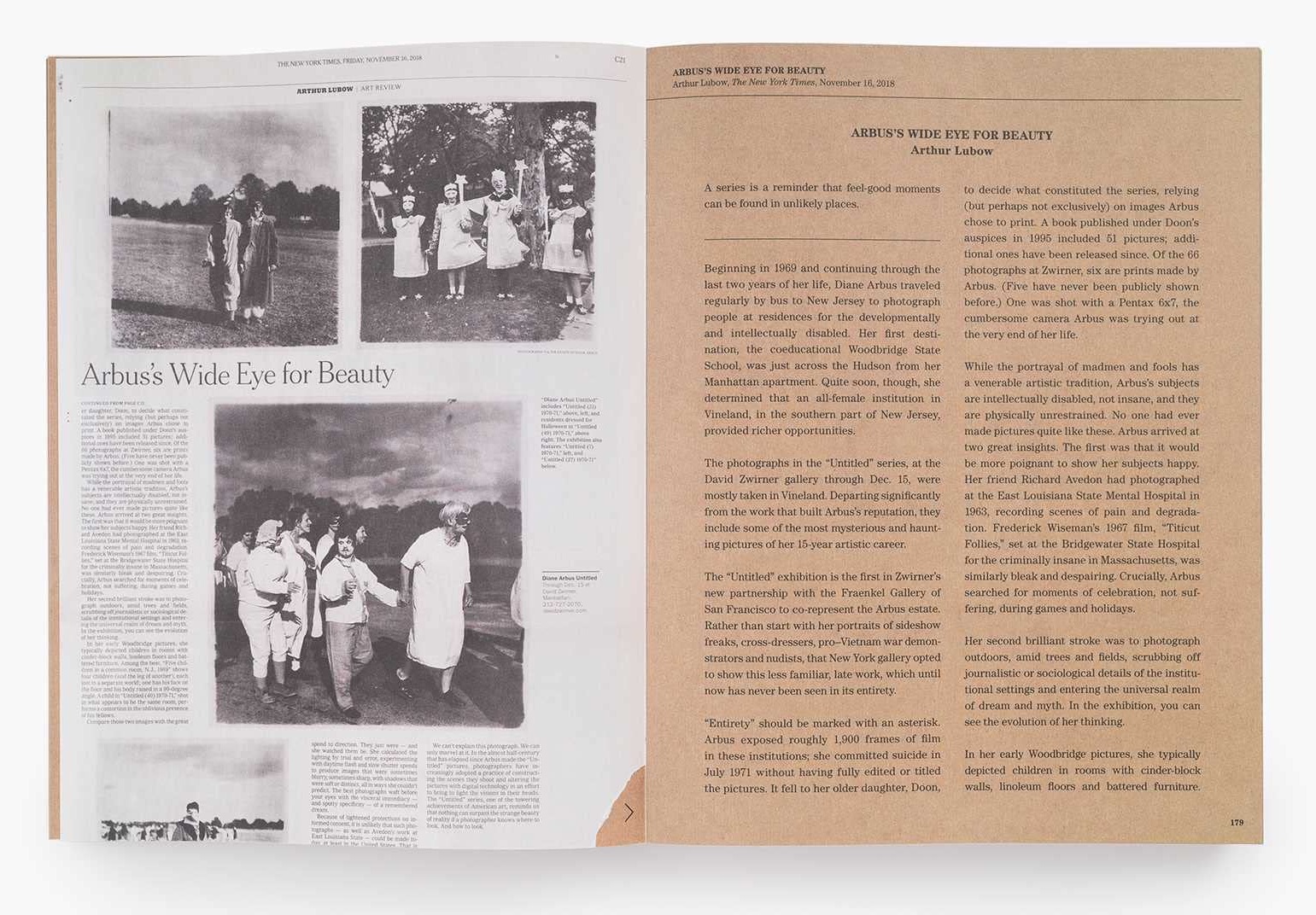
Diane Arbus: Documents (2022), spread 3
But I have to emphasize the word “potential” in that last paragraph. Looking at images of texts on a printed page does not equate with reading those texts. I think it safe to assume that any purchaser of a traditional casebook version of these materials, or any student or teacher or researcher who sought it out, would do so to delve into these texts and engage with the book’s written content. By the same token, I think it likely that those who buy this “enhanced” version of those texts will be lookers, not readers, more engaged with the book’s visual, sensual appeal than intrigued by and ready to become absorbed in the polyvocal discourse it contains.
•
Speaking just as a reader, this is, in fact, not at all an easy book to read. Its sheer weight makes it necessary to rest it on a table instead of hand-holding it or resting it on my lap. Its predictable variety of typefaces, font sizes, and page colors require the reader to move now closer to and now further away from the pages. That same heterogeneity of appearance draws the reader’s attention to the different fonts and the different substrates, foregrounding the simulated physicality of each separate article, which distracts periodically from the textual content.
When texts are (for reason of the size of the original) presented as they appeared on the page and then newly typeset, they appear in black type on the book’s default brown-paper-bag-colored paper. When they appeared originally online, they appear here in white type on a black background. If I set out to design a book intended to cause eyestrain and otherwise make reading difficult, I don’t think I could come up with a better plan. Does this make it more or less likely that any reader’s encounter with this book will result in their focused attention to the argument of any one of the contributors, or to the complex discourse that they constitute as a whole?
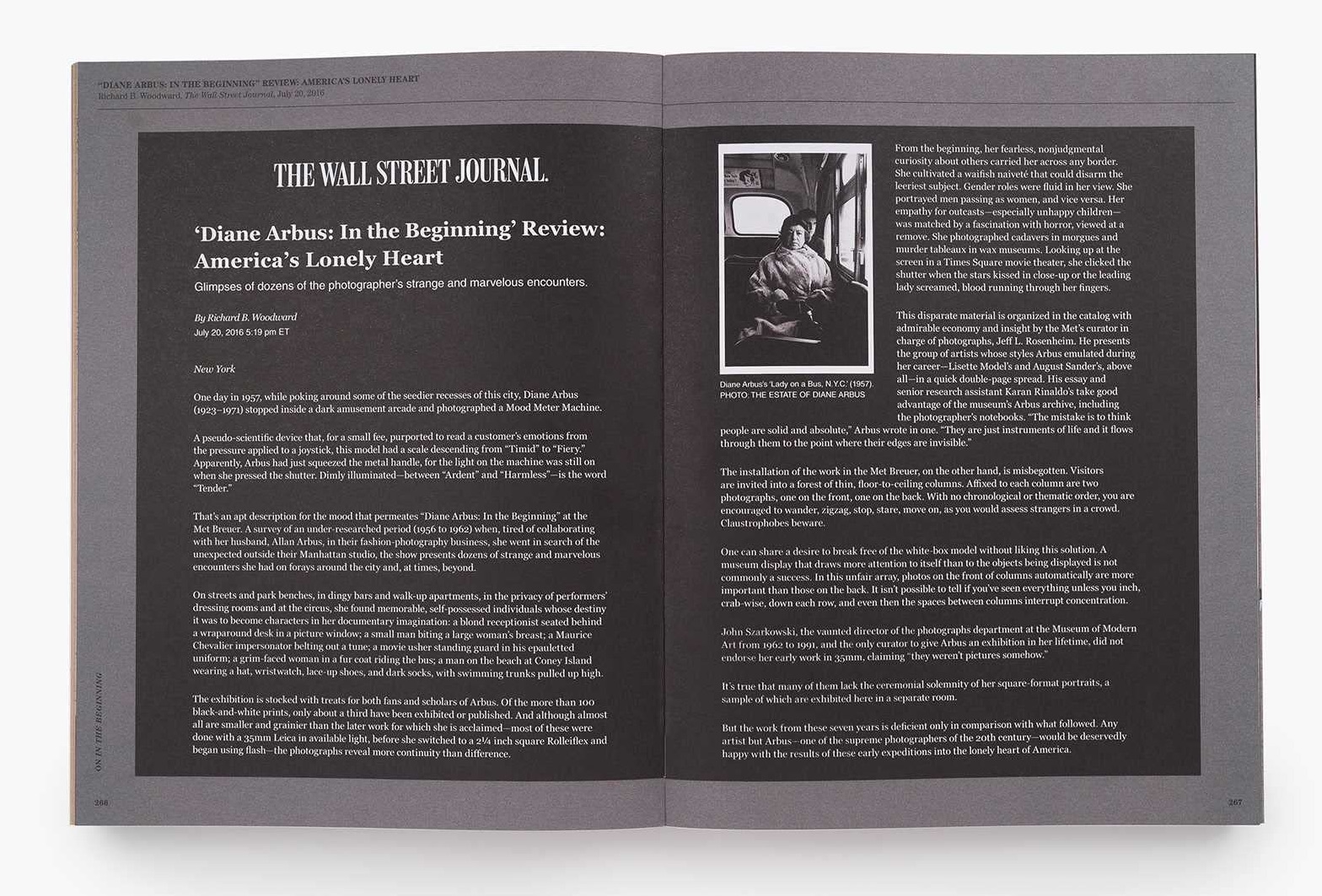
Diane Arbus: Documents (2022), spread 2
•
To the extent that this represents a new model for the casebook as a form, then, I find it problematic at best. Even assuming the same set of texts, a simpler, smaller volume containing them all, newly typeset in any uniform and easily readable font, printed in black ink on white acid-free paper, would likely cost only half as much. A less supersized and sprawling, more judicious selection would reduce the cost even further. That would make it much more accessible to libraries, researchers, and other interested readers.
We can hope for an eventual ebook version of Diane Arbus: Documents that would make it affordable for students and teachers and researchers on a budget. Whether or not that ever materializes, it definitely remains possible to produce relatively inexpensive casebooks — perhaps, given today’s print-on-demand option, even easier that ever to do so.
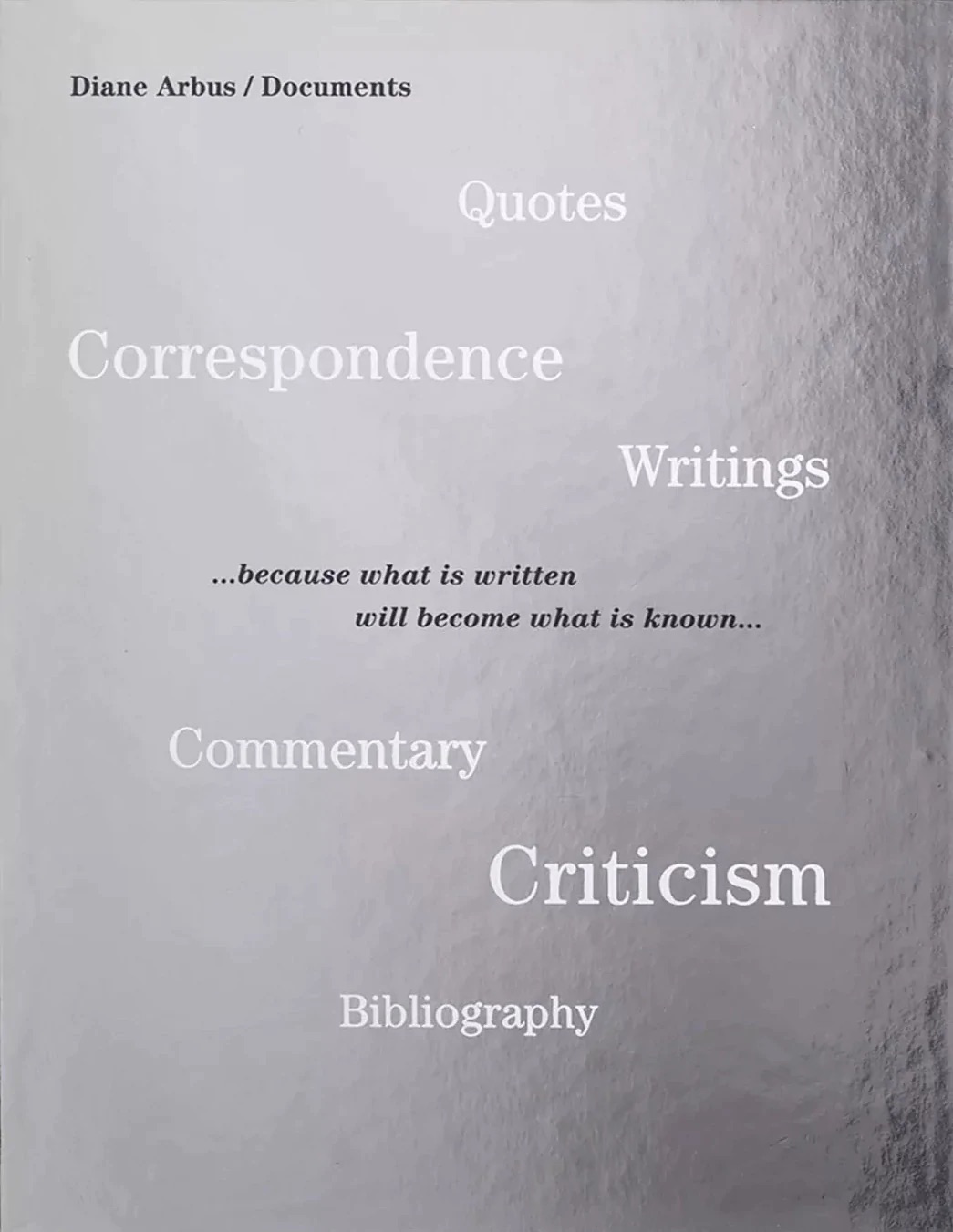
Diane Arbus: Documents (2022), back cover
If the word “casebook” sounds too legalistic, austere, or otherwise off-putting for 21st-century readers I have no objection to jettisoning it, my fondness for it notwithstanding. But I’m not sure that the shift from a collection of texts to a collection of images of texts benefits the texts, individually or collectively — or their potential readers — in any way.
The proof of the casebook is in the reading; let’s see if reviewers of Diane Arbus: Documents elect to grapple with this cross-section of 50 years of the discourse addressing Arbus’s work and the issues raised thereby, and if this book’s buyers do in fact immerse themselves in this instance of the larger discourse on photography and demand more such books. I hope they prove me wrong, but I’ll bet that everyone will pay more attention to the images and the production values. In which case there’s a word for that: Squirrel!
•
Postscript: I offered the editors of this book my analysis of the 1967 “New Documents” show curated at MoMA by John Szarkowski, which they opted not to include (though they list it in the bibliography). You can read that article here at the blog.
I also offered them my review of the Arbus biopic Fur, which did not make it into either the main book or its bibliography. An early post here at the blog, “Fur: The Photographer Meets the Wookiee” treats this film as an offshoot of the Star Wars canon. You may find it entertaining.
(Part 1 I 2)
•

Special offer: If you want me to either continue pursuing a particular subject or give you a break and (for one post) write on a topic — my choice — other than the current main story, make a donation of $50 via the PayPal widget below, indicating your preference in a note accompanying your donation. I’ll credit you as that new post’s sponsor, and link to a website of your choosing.
And, as a bonus, I’ll send you a signed copy of my new book, poetic license / poetic justice — published under my full name, Allan Douglass Coleman, which I use for my creative writing.






I did not even know about the photos of the disabled, I don’t think. I at least have forgotten that there was a book. These photos were, if not completely left out, mostly left out of the giant retrospective that toured starting a few years ago.
It’s interesting to notice that your remarks from 1995 more or less exactly presage a contemporary vigorous thread of belief we see a lot of. I have spent a fair bit of time wrestling with precisely these ethical issues (not as a practical matter, mind) with an eye to sorting out at least some way to think about these issues. With, I confess, at most partial success. Contemporary thinkers treat “harm” as a given here, a position I am not comfortable with, and consider that all else follows trivially. This leads almost immediately to “nobody should take photographs” if you’re rigorous, and which seems like a bad conclusion.
I consider that there is assuredly *something* but that we don’t have a good handle on what that something is. As a consequence, we’re more or less feeling our way through these things.
It seems pretty late to still be fumbling around in the dark.
In my response to the Arbus Untitled book project, I don’t engage with what you refer to as “ethical issues” or the assessment of “harms.” Instead, I raise a specific and precise legal issue: If, when that book appeared, anyone recognizable therein was alive, the Arbus estate and the publisher had a legal obligation to seek publication permission for such an image from their appointed legal guardian. Were any such necessary permissions obtained?
Both the estate and Aperture, the publisher, refused to answer that simple legal question, an affirmative answer to which would have laid that matter to rest, on the record. From my standpoint, then, it seemed possible that any such images had been published without the legally mandatory authorization, meaning that publication of any such image broke the law.
The ethical decision thus became mine: Did public interest in accessing these images override the legal rights of their subjects? I concluded that no, it did not; to the contrary, the law made it clear that the subjects’ rights outweighed any public “right to know” how these disabled people had looked to Arbus a quarter of a century earlier. Thus my ignoring this matter and reviewing the book as a fait accompli would make me not just complicit in any illegality but an amplifier thereof. So I opted out, while explaining my reasons for doing so.
So I don’t agree that a responsible concern for the legal rights of the subjects of photographs “leads almost immediately to ‘nobody should take photographs’ if you’re rigorous.” It certainly didn’t lead me to make that leap.
I didn’t mean to suggest that your precise legal question leads to any such thing!
The contemporary discourse which your earlier question prefigures, however, does. The modern version goes quite a ways beyond mere legality, and wanders into a murky territory. Savannah Dodd’s photoethics.org gives something of the flavor. It is itself an earnest and fairly coherent attempt to give shape to modern ideas around consent and so on, but tends to lean in a bit on “harm” as a kind of ghostly possibility. “Harm” as distinct from well-established ways that photography can actually lead to injury, but rather as a vague gesture that’s almost but not quite soul stealing with a magic box.
Dodd’s project is certainly the moderate, almost conservative, wing of a broader effort particularly within one tranche of British academic photography to “problematize” apparently as much of photography as possible, and it is this social region which strikes me as seeking to, effectively, ban photography entirely.
The demonization of photography itself as inherently exploitative, aggressive, and even violent (Sontag called it “soft murder”) is widespread in postmodern discourse, going on half a century now. My non-review of the Untitled book looked more narrowly at the legal issues involved, precisely because I find that broader conversation about ill-defined “harms” murky and unproductive. With that said, the academic project of “problematizing” photography as a whole merits some serious analysis, which I’m too busy to take on but would gladly host here at this blog. (Hint, hint.)
Curiously, at least as exemplified by the sampling of the critical dialogue around Arbus collected in the Documents book, that set of issues got elided when the Untitled book came along. Alas. Its publication presented a nigh-perfect occasion for a debate on the rights of photographers vs. the rights of photographers’ subjects vs. the rights of the audience for photography.